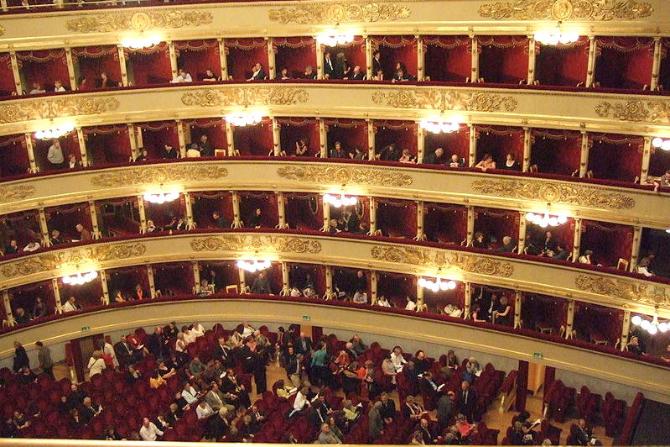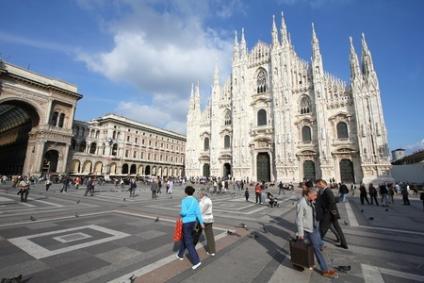La Scala opera house is a world famous venue, the original building was designed by Giuseppe Piermarini and opened in 1778. In the 1800s the productions of Vincenzo Bellini and Rossini graced the stage and ballet was introduced to the theatre's repertoire. Giuseppe Verdi is the composer most associated with La Scala and the success of his operas at La Scala not only brought him success but also made the theatre and opera in general more popular. From 1867 to 1957 renowned conductor Arturo Toscanini was La Scala's artistic director. The world's opera greats have performed at La Scala over the years including the three tenors, Maria Callas and Renata Tebaldi. Performing at La Scala has become a sign that an opera singer had "made it."
La Scala has 3,000 seats in the pit stalls and in six tiers of seating in boxes around the auditorium. Above the seating areas are two galleries or loggione for standing room only. The stage is one of the largest in the country and the auditorium is richly decorated. Renovations on the building were completed in 2004, a larger backstage area was added, the thick red carpets were removed and the technical aspect of the venue was greatly improved.
There is a La Scala Museum accessed from the theatre lobby, in the museum are several halls displaying historic artifacts connected with opera and the theatre. There is a collection of paintings, antique musical instruments, exhibits about the theatre's architecture, busts of famous composers and conductors, a section on Commedia dell'Arte, a collection of ceramics related to the theatre, displays devoted to famous personalities from the theatre's history like Verdi, mementos from famous productions, documents relating to the theatre, set design and a section on theatre games. Visitors to the museum can look down into the theatre auditorium and it is possible to take behind the scenes tours of La Scala.












